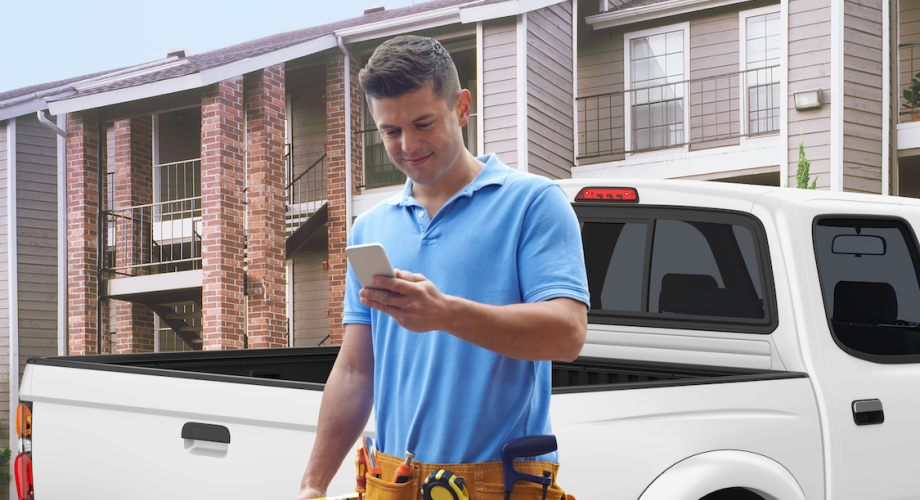From smart locks to social media to centralization, today's multifamily properties are experiencing evolving technology and operational demands. Residents, meanwhile, expect increasingly secure, convenient living experiences. Together, these challenges demand that you adopt proactive, tech-forward key and asset security measures.
1. Transitioning to Smart Locks
With the growing popularity of smart homes, you might be considering implementing smart locks in your community if you haven’t already. In a Parks Associates survey, at least 70% of property managers and owners said they’re interested in smart locks in some capacity.
However, while smart locks have benefits — such as not needing to rekey locks — security researchers have found that smart locks can be vulnerable to hacking, malware, and other cyberattacks. Also, if the power or internet connectivity goes out or if the resident’s phone dies, they could be unable to access their homes. For this reason, you might choose to keep physical backup keys on hand.
Not all residents are comfortable with smart locks. For example, many elderly residents prefer traditional metal keys. In addition, an Apartments.com survey reported that keyless smart locks are one of the amenities renters want least. If your locks use cards or fobs, it’s important to treat them with the same level of security as physical keys.
Recommendations:
-
Make sure residents have a way to access their homes in the event the smart locks are inaccessible.
-
Secure any backup keys or fobs in an electronic key control system for added security and tracking.
-
Ensure you have a digital log of who’s accessed electronic door locks or keys.
2. Social Media Theft Trends
Social media adds a layer of complexity to ensuring security, creating a breeding ground for viral theft challenges targeting specific security weaknesses in apartments communities.
For example, videos showing methods to bypass laundry machine payment systems could encourage residents to avoid laundry fees. Other videos showing joyrides in golf carts might tempt juveniles to steal your property’s golf carts for fun. And the widespread "Kia Boys" challenge, in which teens exploit weaknesses in certain Kia and Hyundai vehicles to steal them, could inspire similar attempts within the community.
Recommendations:
-
Communicate with residents about your community’s policies and the consequences for not following them. Likewise, let them know about any issues with theft, and remind them to secure their vehicles and property.
-
Protect vulnerable areas with layered security measures, such as key management systems, access control, alarms, security cameras, lighting, and parking lot barriers.
-
Use a GPS tracking and theft recovery solution to be notified if someone is using golf carts without authorization. Avoid leaving the keys in the ignition and store them in an electronic key control system when they’re not in use.
3. Centralized Maintenance
According to 20for20’s annual whitepaper, the multifamily industry is making slow but steady progress toward centralization. Although administrative functions are outpacing leasing and maintenance, six of the 20 organizations interviewed indicated that they were planning or piloting centralized maintenance functions. In addition, a Multifamily Insiders survey revealed that 59% of respondents use floating positions for functions such as maintenance.
To optimize efficiency and security in this type of model, technicians need a streamlined method to access the apartments they’ll be servicing while also ensuring they don’t enter any other apartments without authorization.
For properties with smart locks, this process is a matter of assigning a code or programming a fob. But what if communities still use traditional locks? Implementing an electronic key control system at each property and networking them together allows managers to assign keys to technicians ahead of time. If a resident has a complaint about unauthorized access to their apartment, management can quickly run reports to show who, if anyone, had a key to the resident’s home during the time frame in question.
Recommendations:
-
Network key control systems together to allow management to access system data remotely and run reports with consolidated data from multiple properties.
-
To help techs differentiate between keys, print QR code key tags coded with each unit number. This feature is available with certain key control systems.
-
Set up text or email alerts in case a technician fails to return a key within a certain time frame.
By leveraging key and asset management technology to address smart lock vulnerabilities, combat social media-driven theft challenges, and optimize maintenance operations, your property can foster safer, more efficient environments for residents and staff. Explore innovative solutions blending this technology with practical security measures to meet these industry trends head-on.
Learn more about KeyTrak’s key and asset management solutions
